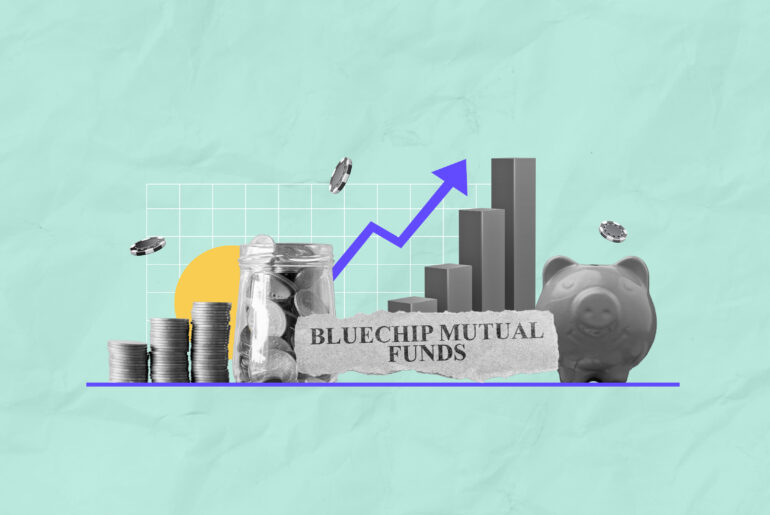Last Updated on Dec 26, 2022 by Anjali Chourasiya
What if we tell you there are two “go-to” metrics to gauge the performance and response of the fund against the benchmark? Well, using Alpha and Beta, you can assess the financial performance of the funds so that the returns on the investment meet your expectations.
Before walking ahead, let’s take a concise understanding of the benchmark index, as you’ll encounter this term quite often in the article. The SEBI has made it mandatory for fund houses to determine a benchmark index. This index could be Sensex, Nifty, CNX Midcap, Smallcap, or others. The benchmark index provides a standard point of reference for the comparison of a mutual fund’s returns.
Now, let’s dive into Alpha and Beta in detail.
Table of Contents
What is mutual fund performance?
When you invest in mutual funds, what you get is units of the scheme. The traded price of each unit of the mutual fund is determined by the Net Asset Value (NAV). This NAV changes every day in line with the price movement in the different securities that the fund has invested in.
NAV plays the apex role in the performance of mutual funds. It is calculated by dividing the total value of all the cash and securities in a fund’s portfolio, minus any liabilities, by the number of outstanding shares.
NAV = (Fund assets – Fund liabilities) / Number of outstanding shares
The increase in the NAV from the time of investment is the profit an investor makes. Higher the NAV growth, the better the performance of the fund!
That said, the absolute value of NAV is not the only indicator of mutual fund performance. The rate of growth that signifies the returns from the investment is a more important aspect as the NAV changes on a per-day basis.
What is Alpha?
Alpha measures the performance of the fund in comparison to the performance of the benchmark market index it tracks. In some ways, Alpha is a measure of the performance of the fund manager itself. It measures the endeavours put in by the fund manager to drive the fund to yield handsome returns.
Note: The baseline for Alpha is taken as 0.
- An Alpha of 0 would mean the fund manager’s performance is exactly in line with the benchmark index. That is, the mutual fund would generate precisely the same return as the benchmark index.
- A positive Alpha denotes that the fund manager has outperformed the benchmark index in terms of returns. An Alpha of 1.0 means the fund has outperformed the index by 1%.
- A negative Alpha signifies that the fund manager is underachieving. A -1.0 alpha indicates 1% underperformance.
| Value of Alpha | Performance of the asset manager |
| >0 | Outperformance |
| =0 | Performance precisely in line with the index |
| <0 | Underperformance |
What is Beta?
Beta is a measure of the responsiveness of a mutual fund vis-a-vis its benchmark index. It points out how sensitive a mutual fund is to fluctuations in the benchmark index.
The idea behind the indicator Beta is to gauge the stability of the mutual fund. A mutual fund should not take wild swings and should be capable of absorbing any wild momentum in the benchmark index.
Note: Beta is baselined at 1.
- A Beta of 1 indicates that the mutual fund shows the same deviations as the benchmark index.
- A Beta > 1 means the mutual fund is overly responsive to the benchmark index. For example, if a fund portfolio’s Beta is 1.2, it is theoretically 20% more volatile than the market.
- A Beta < 1 indicates that the fund is relatively stable and doesn’t change to the extent the benchmark index does.
| Value of Beta | Sensitivity of the fund |
| >1 | More variation than the benchmark index |
| =1 | Same variation as that of the benchmark index |
| <1 | Less variation than the benchmark index |
Importance of Alpha and Beta
The past performance of a mutual fund can be of great help while making informed decisions. Though past performance is not an assurance that the fund will perform in the future, it still gives a baseline to compare the mutual fund with its peers.
When gauging the fund’s history and track record, ratios like Alpha and Beta are of great help. In addition, they help with the projection of prospects like viability, growth, and sustainability of the fund.
Alpha reveals how competent the fund manager has been in generating profits in the past, how well they deal with and how quickly they adapt to the changing market scenarios. An investor would be best placed to make a call depending on their financial objectives and risk appetite when they are familiar with the past performance and the fund manager’s capabilities.
Likewise, Beta signifies how volatile a mutual fund has been in the past in response to volatility in the market. A mutual fund with a higher beta would be a sensible pick for an investor looking to invest aggressively and reap some quick returns in a shorter run. A smaller upside surge in the benchmark index would result in the mutual fund moving exponentially.
Similarly, for an investor with a modest-to-safe approach, a mutual fund with a lower beta could be ideal as the fund won’t react as wildly to the market fluctuations and yield a steady return.
Calculation of Alpha in mutual funds
Alpha can be calculated using the formula:
(Closing price – Open price + DPS) / Open price
Here, DPS stands for Distribution Per Share. Suppose the Alpha for a mutual fund comes out to be 4. It means that the asset manager has reaped 4% higher returns than the benchmark index.
Calculation of Beta in mutual funds
Beta can be calculated using the formula:
Covariance/Variance of market returns
Here, covariance is the measure of how two stocks react to each other in changing market conditions. When the two stocks move in unison, a positive covariance is achieved. In contrast, covariance is negative when the two stocks move in different directions.
Variance represents the price deviation of the fund over a given period. Thus, it quantifies how much the price of the fund has deviated from its mean.
Difference between Alpha and Beta
The two parameters are similar in the sense that they help investors in making wise decisions about their investments. But what is the difference between Alpha and Beta? Let’s find out.
| Difference points | Alpha | Beta |
| What it measures | Alpha measures the performance of a fund in relation to its benchmark index. | Beta is a sensitive index that measures a fund’s volatility relative to a benchmark index. |
| Baseline measures | For Alpha, it is zero. It means that a fund’s performance does not exceed its relative benchmark. | For Beta, it is one. It means the price movement of a fund is the same as its relative benchmark index. |
They can be used independently, or they may be used together to determine if an investment is expected to outperform its benchmark index, adjusted for its risk.
Other ratios worth considering
Alpha and Beta, arguably, are the most widely used ratios to evaluate a fund’s performance but not the only ones. As mentioned above as well, there are Standard Deviation, Sharpe Ratio, P/E Ratio, and R-Square, among others, to get meaningful insights into the fund’s performance. Let’s get to know each one in brief:
Standard deviation: It evaluates the quantum of the volatility of the fund. Standard deviation determines the deviation a mutual fund’s price has undergone from its mean in different time periods.
Sharpe Ratio: It is used to quantify the returns at changing levels of risk. Sharpe Ratio is reached by subtracting the risk-free return from the portfolio return. Generally, it is calculated every month and compiled annually for better understanding.
Sharpe Ratio = (Average returns of the fund − Risk-Free Rate) / Standard Deviation of fund’s return
R-Squared: It is a statistical tool devised to measure how identical the mutual fund’s performance is to its benchmark. R-Squared has a range of 0-100. An R-Squared value of 100 would mean that movements in the benchmark index explain all the actions of the mutual fund. While a lower R-Squared value, let’s say 25, means movements in the benchmark index only explain 25% of the mutual fund activities.
To conclude
Alpha and Beta, along with the ratios mentioned above, help decipher the complete understanding of a fund and give ample information to enable us to make conjectures about the future. It is essential to develop an understanding of these ratios to be able to select the right fund in conjunction with your investment objectives.
FAQs
What are Alpha and Beta in a mutual fund?
Mutual fund ratios are technical tools that help you assess the performance of a mutual fund scheme. Two of them are Alpha and Beta.
– Alpha is a number that shows how well the scheme has performed with respect to its benchmark index. If the Alpha is positive, the scheme is said to have surpassed its benchmark index. The higher the Alpha, the more lucrative the investment option is.
– Beta shows the volatility mutual fund experiences in relation to the benchmark index. A Beta of one indicates that the fund moved exactly in tandem with the market. If the Beta is higher than one, it means the fund was more aggressive in its approach than the benchmark index.
What are the formulas for Alpha and Beta?
Alpha and Beta formula:
Alpha –
(Closing price – Open price + DPS) / Open price
Here, DPS stands for Distribution Per Share.
Beta –
Covariance/Variance of market returns
Here, covariance is the measure of how two stocks react to each other in changing market conditions.
- How To Withdraw Mutual Funds? - Jun 6, 2025
- Top Maternity Insurance With Low Waiting Periods - Jun 5, 2025
- ROE vs ROCE – What are the Differences? - Jun 5, 2025





